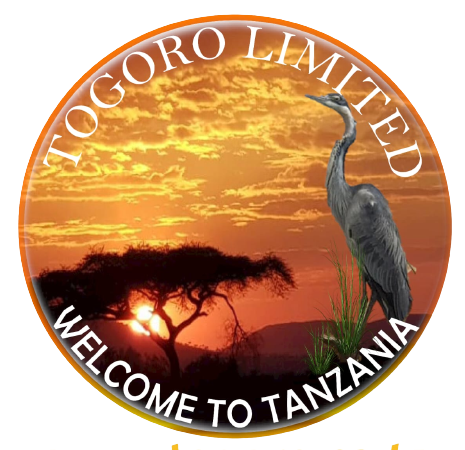10 Days Serengeti wildebeest Migration
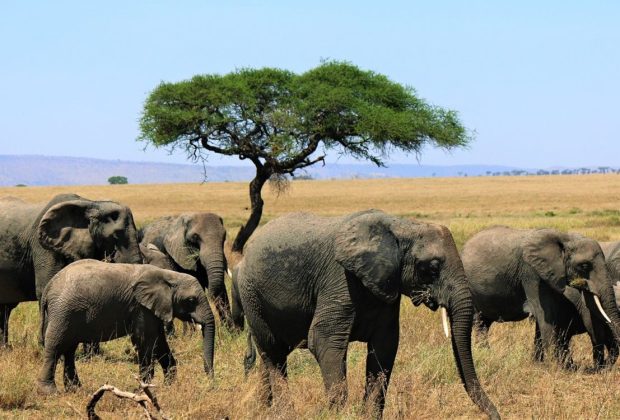
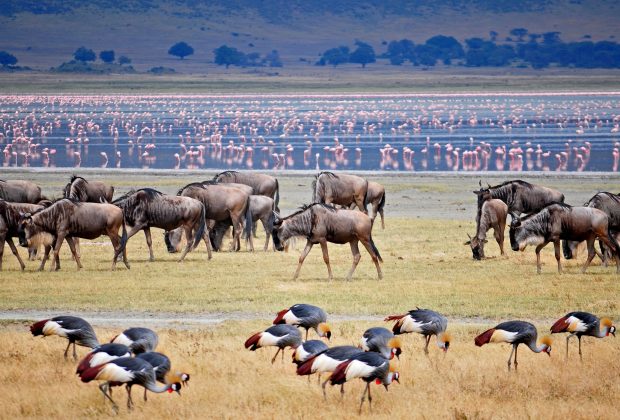
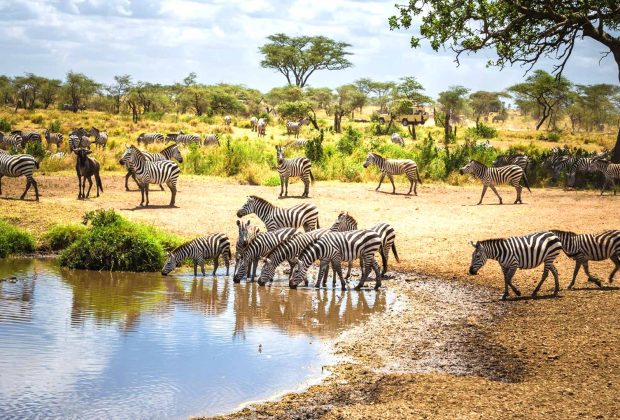
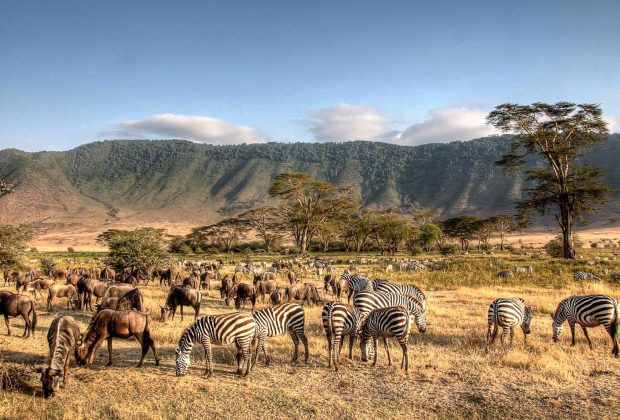
Wildebeests Migration is a display of natural wonders with over two million wildebeests, zebras, and antelope traveling over 450 miles across the plain to ensure their survival, unaware that there’s danger presented by the stalking lions and cheetahs among other predators of the wildlife. Witness huge crocodiles of the Mara River as they wait for the herbivorous to cross the swollen Mara river and enter into Masai Mara Game Reserve from Serengeti National Park.
Day 01 Arrival – Arusha
Arrival at Kilimanjaro International Airport. Our guide will meet you and facilitate transfer to your hotel.
Meals: Dinner
Accommodation: The Mount Meru Hotel
Day 02 Serengeti National Park (North)
After breakfast, transfer to Arusha airstrip for your flight to Serengeti North which will depart around 7am and arrive at 10am for a game drive in Northern Mara. Serengeti, among other incredible wildlife and stunning views is famed for the annual migration of over 1.5 million wildebeest and hundred thousands of zebras, a frenzied bout of territorial conquests and mating happening from July-October. Witness an actual survival of the fittest as these animals plunge through crocodile-infested waters. The wildebeest produces more than 8,000 calves daily before the 1,000 km (600 mile) pilgrimage begins again.
Meals: B,L,D
Accommodation: Acacia Migration Camp (Luxury)
Day 03 Serengeti North (Kogatende)
After breakfast, we depart for Serengeti North for a game drive viewing the great migration. River crossings at Kogatende starts in August as the mega herd settles into the area. Between August- October, game viewing is at its best with river crossings pretty much guaranteed every day. There is no distinct movement as the herds tend to cross back and forth over the river, following the rains and subsequent fresh grasses.
Meals: B,L,D
Accommodation: Acacia Migration Camp (Luxury)
Day 04 Serengeti North (Kogatende)
After breakfast, we will proceed for a full day game drive viewing the great migration at Mara area. Resident wildlife numbers are exceptionally high in the Wagakuria area. The key feature is the Mara River and there is a great chance to see the herds cross the Mara River to the north on one day and back south a few days later. Please note that it can be very difficult to witness crossing and is sometimes a matter of luck. A herd can be seen next to river and only decide to cross a couple of days later. This area is a stunning region with kopjes, woodland, riverine vegetation and open plains, similar to Kenya’s Masai Mara Game Reserve.
Meals: B,L,D
Accommodation: Acacia Migration Camp (Luxury)
Day 05 Serengeti National Park (Central Seronera)
After breakfast at the camp, we drive to Serengeti central, Tanzania’s oldest and most popular national park and a world heritage site. The Serengeti is famed for its annual migration, when some six million hooves pound the open plains, as more than 200,000 zebra and 300,000 Thomson’s gazelle join the wildebeest’s trek for fresh grazing. Yet even when the migration is quiet, the Serengeti offers an amazing game-viewing in Africa: great herds of buffalo, smaller groups of elephant and giraffe, and thousands of eland, topi, kongoni, impala and Grant’s gazelle.
Meals: B,L,D
Accommodation: Serengeti Acacia Tented Camp
Day 06 Serengeti Central (Central Seronera)
After breakfast, we will have a full day game drive in Central Serengeti. Apart from the large mammals, Serengeti is also home to gaudy agama lizards; Rock hyraxes scuffle around the surfaces of the park’s isolated granite koppies. Wide varieties of dung beetle were found, and around 500 bird species have been recoded ranging from the outsized ostrich and bizarre secretary bird of the open grassland, to the black eagles that soar effortlessly above the Lobo Hills.
Meals: B,L,D
Accommodation: Serengeti Acacia Tented Camp
Day 07 Serengeti (Cental Seronera)
This is another full day game drive at Serengeti National Park, known for its healthy population of resident wildlife, particularly the “big five”, named for the five most prized trophies taken by hunters:
Lion: the Serengeti is believed to hold the largest population of lions in Africa due in part to the abundance of prey species. More than 3,000 lions live in this ecosystem.
African Leopard: these reclusive predators are commonly seen in the Seronera region but are present throughout the national park with the population of around 1,000.
African Elephant: the herds are recovering from population lows in the 1980s caused by poaching and are largely located in the northern regions of the park.
African Buffalo: considered by many to be the most dangerous of the big five, reportedly causing the most hunter deaths, with wounded animals reported to ambush and attack pursuers.
Rhinoceros: this may refer to either black or white rhinoceros. Among big five game hunters, the black rhinoceros is preferred, although it is now critically endangered.
Meals: B,L,D
Accommodation: Serengeti Acacia Tented Camp
Day 08 Ngorongoro Crater Tour
After breakfast, we will have an early morning game drive to Ngorongoro inside the Crater. The Ngorongoro Conservation Area (NCA) is an extensive highland area along the eastern arm of the Rift Valley, with the world-renowned Ngorongoro Crater as its focal point. Ngorongoro was established to conserve wildlife and other natural resources. It also safeguards the interests of indigenous people and promotes tourism.
Meals: B,L,D
Accommodation: Acacia Tarangire Luxury Camp (Luxury)
Day 09 Tarangire National Park
Today, we will proceed to Tarangire for a full day game drive in the park located slightly off the main safari route. Tarangire National Park is a lovely quiet park in Northern Tanzania most famous for its elephant migration, and birding safari with a quiet atmosphere.
Meals: B,L,D
Accommodation: Acacia Tarangire Luxury Camp (Luxury)
Day 10 Back to Arusha
After breakfast, we head back to Arusha and pass by a shopping market on the way. After which, we will facilitate your transfer to Kilimanjaro International Airport for your onward flight.
Meals: B,L
Accommodation: Can be arranged at an extra cost
Activities/services included in the cost:
- Accommodation as per the itinerary
Lodges on Full Board - Road transportation in 4wd land Cruiser safari vehicle
Game drives as per the itinerary - Park entrance fees and crater service fees
- English Speaking guides available for the safari
Emergency Evacuation/Flying Doctors
- Accommodation as per the itinerary
Activities/services excluded in the cost:
- Visit to Masai Cultural Village
- All International Flights/local Flights + Taxes
- Visa fees, Travel & Personal accident insurance
- Excursions, services and activities not mentioned in this program
- Personal expenses e.g. laundry, telephone calls, Drinks, Tips and gratuities
Passenger Information
- Passengers should bring only duffle bags safaris{not suitcases}
- All the passengers must have Identification Card/Passport with them for internal flights.
- Baggage on domestic flights is strictly limited to 15kgs per person (including hand luggage). Any excess baggage will be charged by the airline at check-in.
- Passengers arriving to Tanzania may be asked to present a valid Yellow Fever Vaccination Certificate
- Tourist Visa will be obtained at the entry points, but it is advisable to double check before travelling to Tanzania.
What is the best time of year to go on a safari in Tanzania? The best time for a safari in Tanzania depends on your preferences. The dry season (June to October) is ideal for wildlife viewing as animals gather around water sources, but it’s also the busiest time. The wet season (November to May) offers lush landscapes and fewer tourists, but wildlife may be harder to spot due to thick vegetation.
What should I pack for a safari in Tanzania? Essential items include lightweight and neutral-colored clothing, sturdy walking shoes, a wide-brimmed hat, sunscreen, insect repellent, binoculars, a camera with extra batteries and memory cards, and any necessary medications. It’s also advisable to pack layers as temperatures can vary throughout the day.
Do I need a visa for Tanzania? Most visitors to Tanzania require a visa, which can be obtained upon arrival at the airport or purchased online in advance. Visa requirements vary depending on your nationality, so it’s important to check the latest information before traveling.
Is it safe to go on a safari in Tanzania? Tanzania is generally safe for tourists, including safaris, but it’s important to take standard precautions such as staying updated on travel advisories, avoiding isolated areas at night, and following the guidance of your tour guides.
What types of accommodations are available on safari? Accommodation options range from luxury lodges and tented camps to budget-friendly campsites. Luxury lodges typically offer comfortable amenities such as en-suite bathrooms, gourmet meals, and swimming pools, while tented camps provide a more authentic safari experience with canvas tents and communal dining areas.
What wildlife can I expect to see on safari in Tanzania? Tanzania is home to a diverse array of wildlife, including the Big Five (lion, elephant, buffalo, rhino, and leopard), as well as cheetahs, giraffes, zebras, wildebeests, hippos, crocodiles, and a variety of bird species. The specific animals you’ll encounter will depend on the location and time of year.
Are safaris suitable for children? Many safari operators offer family-friendly safari options, including accommodations with family rooms, shorter game drives, and child-friendly activities. However, it’s important to consider the age and interests of your children when planning a safari and to choose activities that are suitable for them.
What is the typical duration of a safari in Tanzania? Safari durations can vary depending on your preferences and itinerary. Most safaris range from a few days to a week or more, with shorter safaris focusing on specific national parks or wildlife areas and longer safaris covering multiple destinations. Customized itineraries are also available to suit individual preferences and schedules.
